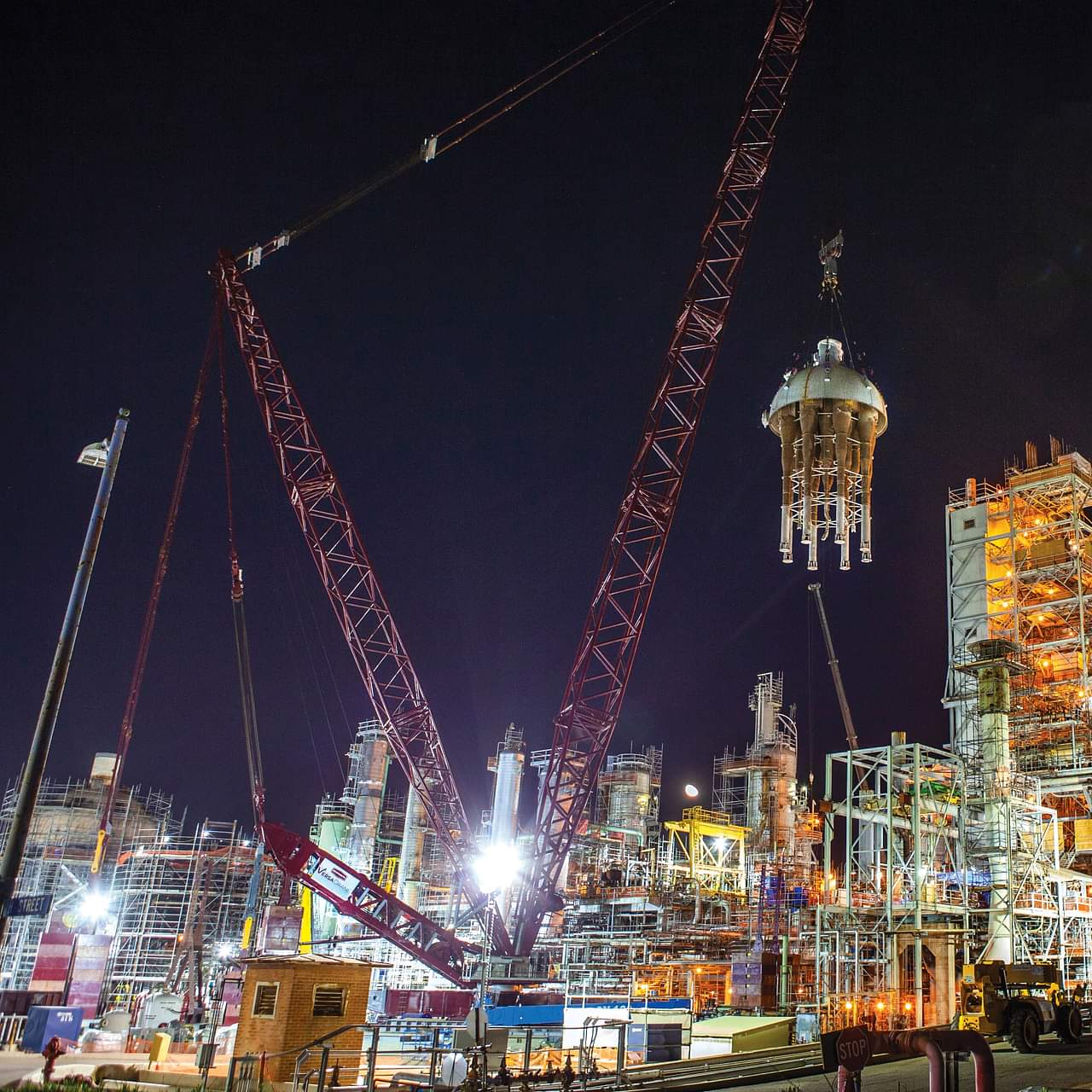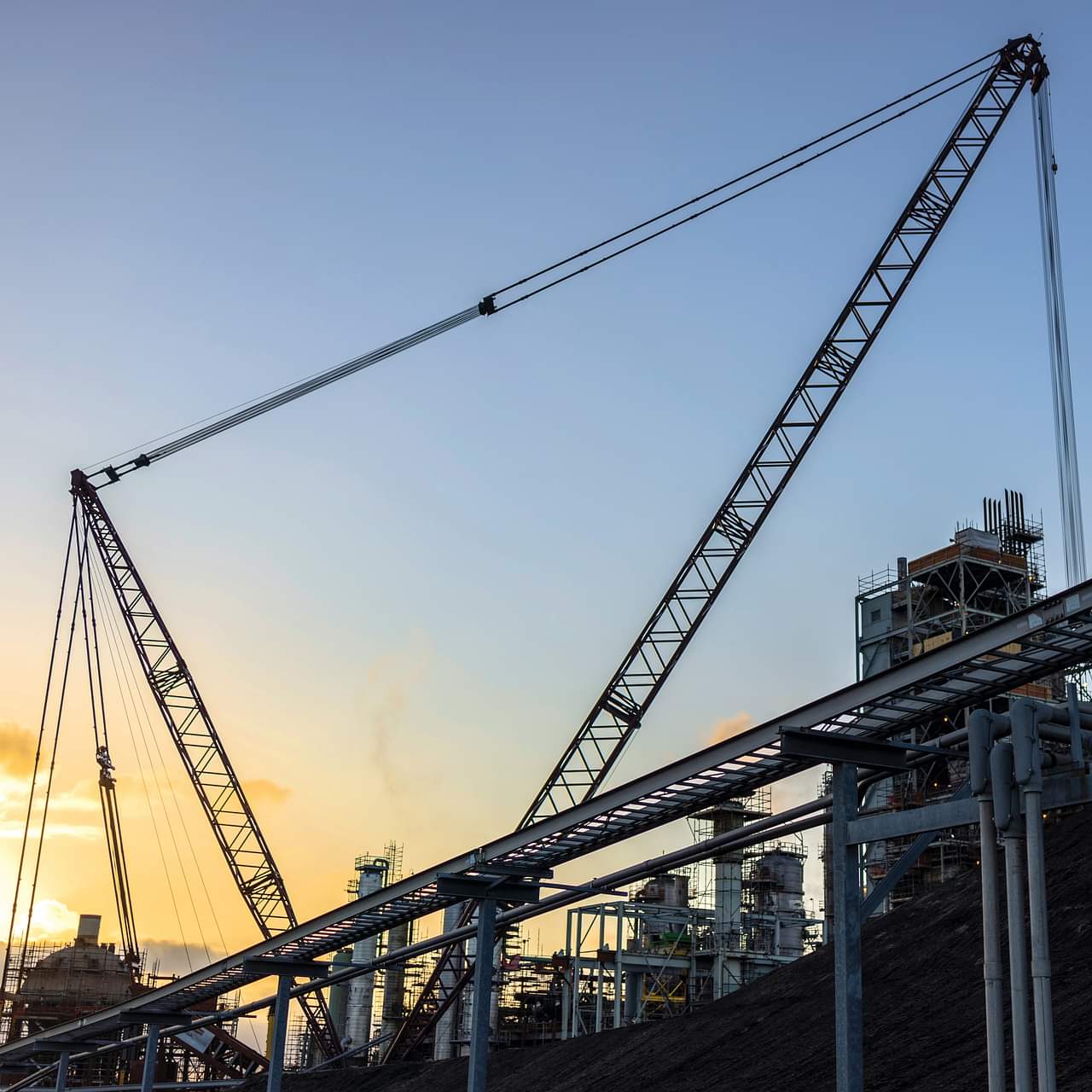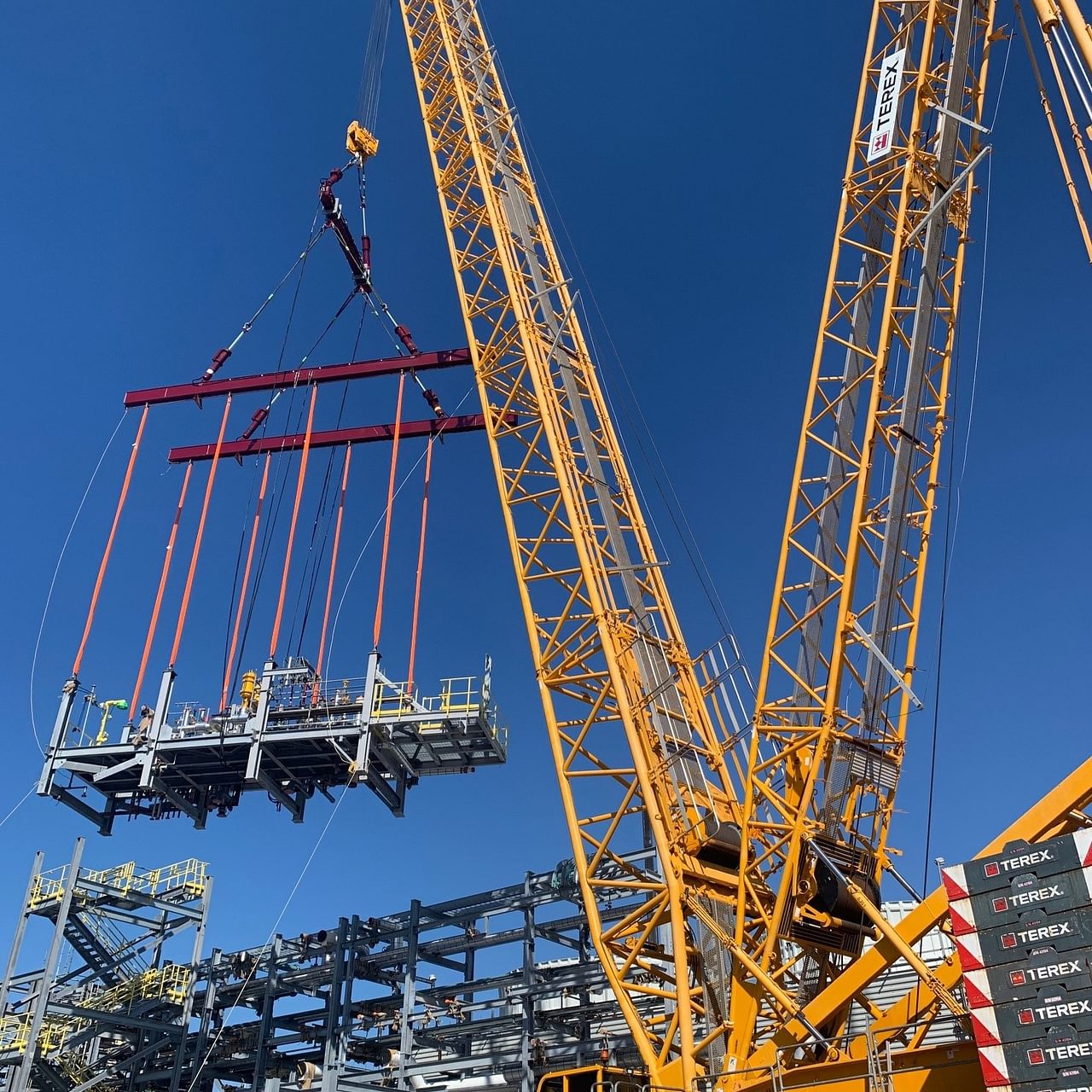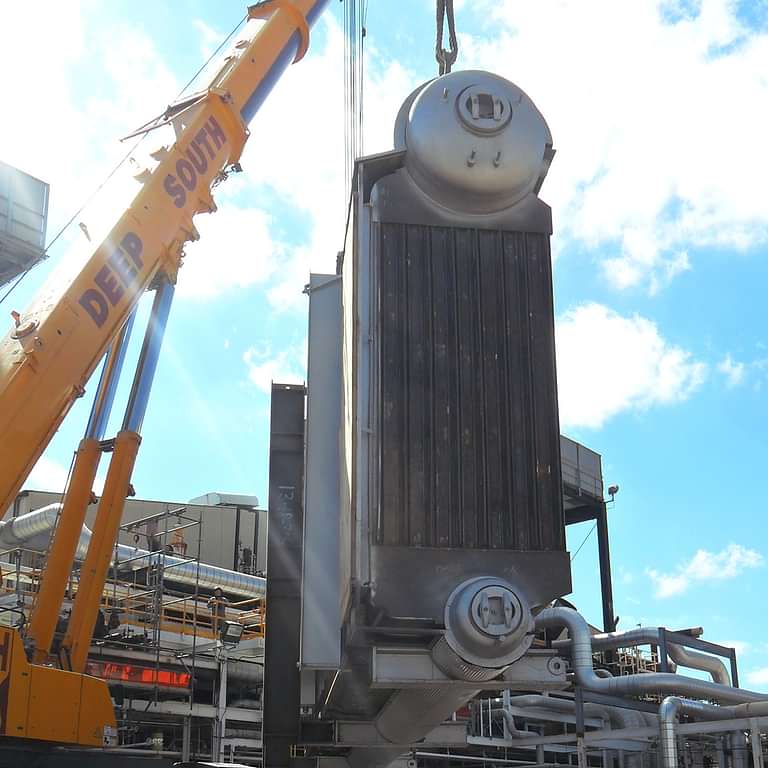Customized Heavy Lift Solution Delivers Timely, Safe Regenerator
Limited space, low ground bearing pressure and a cumbersome heat exchanger combined to create some unique challenges for the Deep South team in California.
The client needed to lift a 35’-diameter x 70’-long regenerator head with cyclones, weighing 775,000, pounds in a tight, geologically-compromised area.
Avoiding Obstructions
The location for the crane setup sat over a previously-demolished operating unit, which left behind many underground obstructions.
Deep South worked with the client to carefully study the necessary ground bearing requirements, which had to stay below 2,000 psf. An acceptable solution required multiple iterations of analysis and recommendations to meet the site requirements and complete the lift.
The final solution called for an 1,800-ton VersaCrane™ TC-28000 crane, a crane purpose-built for high-lift capacity in low ground bearing situations.
For the regenerator lift, the ability to adjust the VersaCrane’s outrigger positions allowed the team to optimize the position of the crane to avoid the underground obstructions. The team utilized Deep South’s steel distribution beams to further spread outrigger loads over a greater area.
Close Confines/Secure Lift
A second concern was the confined area where the crane was set up to perform the lift. The VersaCrane™ fleet works extraordinarily well in confined areas, thanks to its hinge counterweight system that gives the crane more capacity without substantially increasing the tail swing radius. Further, the counterweights allow the crane to swing the minimum tail swing radius without losing load capacity. Another unique benefit of the VersaCrane™ fleet is its ability to adjust the mast radius in mid-lift.
The combined flexibility of mid-lift adjustments and a hinged counterweight proved ideal for the complex regenerator lift.
Due to obstructions at the rear of the crane, the initial pick of the regenerator from the temporary support structure required a limited tail swing. Besides the 363’ boom, the team relied on a 1,500-kips auxiliary counterweight and a second 480-kip auxiliary counterweight with a reduced mast radius to make the first lift (and avoid the obstructions). Once the crane and regenerator were swung in line to the final set position, the mast radius was increased to achieve the configuration needed for the final set on the permanent structure.
Congratulations to the team for navigating this complex project safely and on time.
-
Equipment Used
-
Services Used





